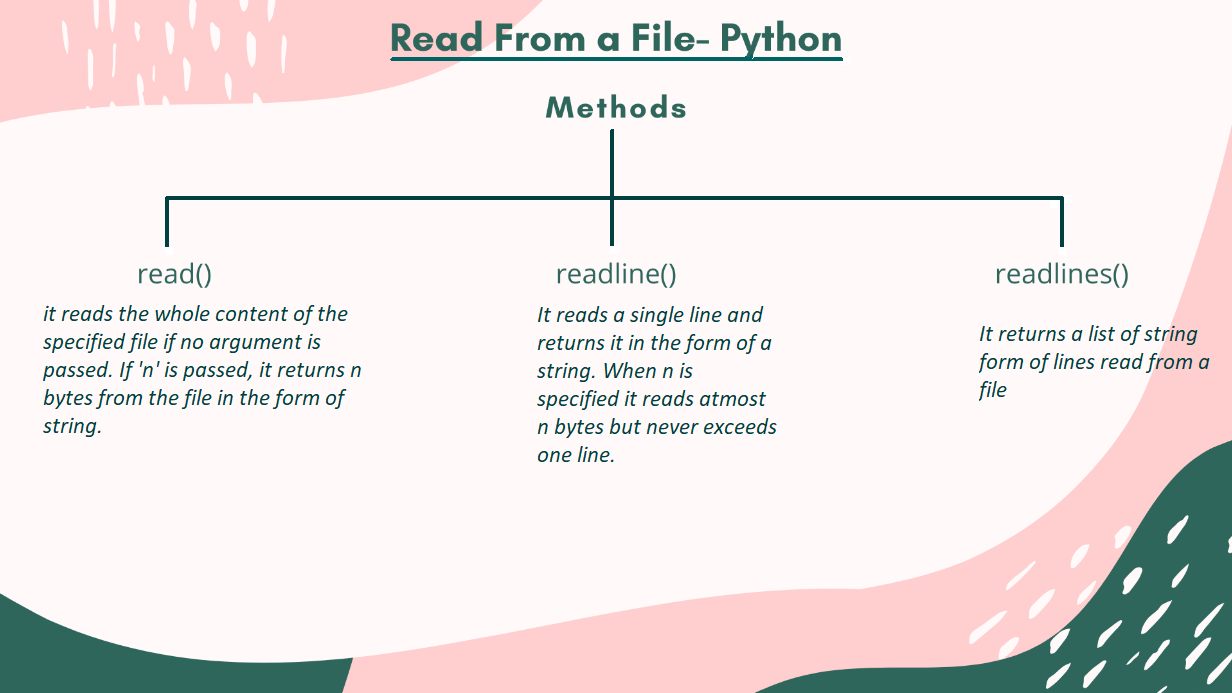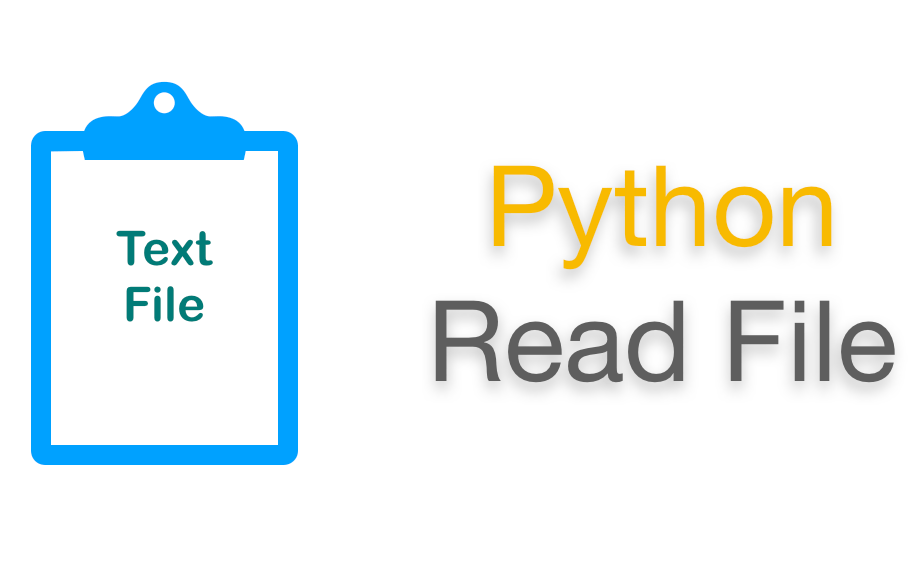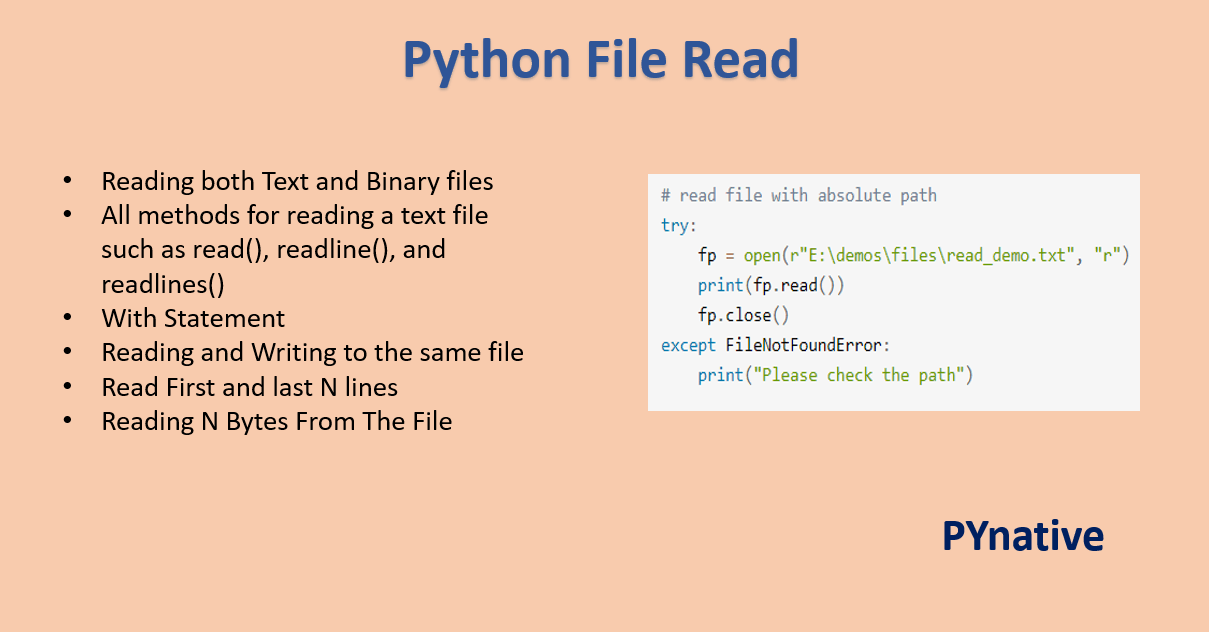Python Read A File Into A String
Python Read A File Into A String - Load the content of a single text file. Use the read() method to read the file; Read through this article to get a detailed explanation about the python stringio module. Well, we have read the file. Reading and writing files 7.2.1. In this short python tutorial we’ll learn how to load the contents one or multiple files (being both text, csv files) into a string variable object with python 3. How to load files into the main memory and create a file. Web following is the step by step process to write a string to a text file. Web to read this file, follow the code below. Once all the writing is done, close the file.
The function returns a file object. Call read () method on the file object. If you omit the size, the read () method reads from where it left off till the end of the file. Web text_file.readlines() returns a list of strings containing the lines in the file. Open the file using the open() function; Web 1 answer sorted by: Read through this article to get a detailed explanation about the python stringio module. Web 1 if you really need a stringio (likely the file object will do), just do stream.write (open (filename).read ()). Web steps to read a text file into a string and strip newlines in python. Once all the writing is done, close the file.
Well, we have read the file. Web steps to read a text file into a string and strip newlines in python. 5 you should be able to supply an open file instead of as stringio instance. The handle is positioned at the beginning of the file. Web f1 = open (file1, r) text = f1.read () command to do the reading. Web to read this file, follow the code below. The lines may include a new. Web some applications for file manipulation in python include: Raises i/o error if the file does not exist. The handle is positioned at the beginning of the file.
Top 13 python readfile in 2022 Gấu Đây
Well, we have read the file. If you want only a string, not a list of the lines, use text_file.read() instead. 3 you can use ast.literal_eval to convert the bytes literal to bytes: Call write () function on the file object, and pass the string to write () function as argument. Web use the join() function to read a text.
Python File Input Read Version 1 YouTube
Web to read this file, follow the code below. In this tutorial you will learn: The handle is positioned at the beginning of the file. Once all the writing is done, close the file. We can read a text file into a string using this function also.
Python File Handling Create, Open, Append, Read, Write Python
Web the read method readlines () reads all the contents of a file into a string. Web some applications for file manipulation in python include: Web following is the step by step process to write a string to a text file. Open the text file in write mode using open () function. Store the resulting string in a variable;
Python Read Text File Line By Line Into String Texte Préféré
Web 1 if you really need a stringio (likely the file object will do), just do stream.write (open (filename).read ()). Web following is the step by step process to write a string to a text file. What makes up a file and why that’s important in python Once all the writing is done, close the file. The function returns a.
√99以上 line break in python output 227297Line break in python output
In this tutorial you will learn: You also have another problem in your code, you. Web the read method readlines () reads all the contents of a file into a string. Once all the writing is done, close the file. What makes up a file and why that’s important in python
Python Read Text File Line By Line Into Dataframe Texte Préféré
Use the read() method to read the file; F = open (details.txt,r) print (f.read ()) we are searching for the file in our storage and opening it.then we are reading it with the help of read () function. Where old is the string to be replaced and new is the string that will replace it. The handle is positioned at.
Python Read File Python File Open (Text File example) EyeHunts
The task could be performed using the replace function, a default function in all python distributions. Open () function returns a file object. Csvfile can be any object with a write() method. Read file line by line to output line by line, you can use a for loop. Reading and writing files 7.2.1.
Reading Files in Python PYnative
Methods of file objects 7.2.2. If csvfile is a file. How to load files into the main memory and create a file. What makes up a file and why that’s important in python Web python read file into string using replace () function.
Python File
Web steps to read a text file into a string and strip newlines in python. Close the file by calling close () method on. Raises i/o error if the file does not exist. The function returns a file object. Call write () function on the file object, and pass the string to write () function as argument.
Python reading file, writing and appending to file YouTube
We will cover several scenarios: Open the file for writing. Save the file with name example.py and run it. F = open (details.txt,r) print (f.read ()) we are searching for the file in our storage and opening it.then we are reading it with the help of read () function. 5 you should be able to supply an open file instead.
Open The File Using The Open() Function;
3 you can use ast.literal_eval to convert the bytes literal to bytes: The string format() method 7.1.3. Save the file with name example.py and run it. Web steps to read a text file into a string and strip newlines in python.
Web Text_File.readlines() Returns A List Of Strings Containing The Lines In The File.
Web to read this file, follow the code below. Now, is it possible to read the string in such a way that when it is read into the string, it is i don't like this, instead of i don\xe2\x80\x98t. F = open (details.txt,r) print (f.read ()) we are searching for the file in our storage and opening it.then we are reading it with the help of read () function. Call inbuilt open () function with file path as argument.
The Function Returns A File Object.
Web some applications for file manipulation in python include: Read file line by line to output line by line, you can use a for loop. We will cover several scenarios: The handle is positioned at the beginning of the file.
Web F1 = Open (File1, R) Text = F1.Read () Command To Do The Reading.
You also have another problem in your code, you. Once all the writing is done, close the file. Where old is the string to be replaced and new is the string that will replace it. Use the replace() method to replace any newline characters;









